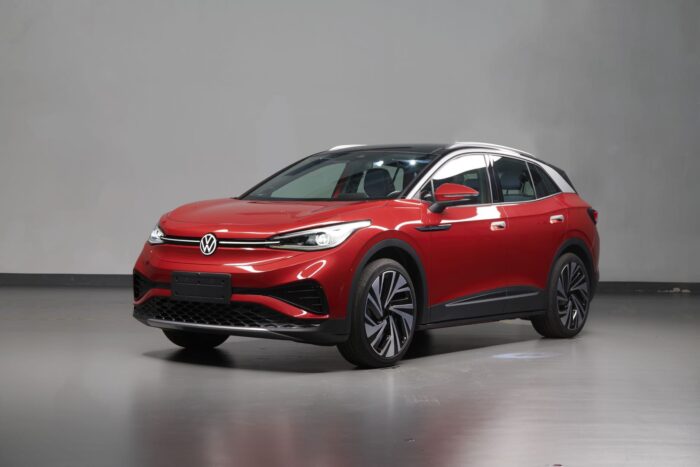Volkswagen has revealed its second all-electric offering – the ID.4. It’s the second model to be built based on the modular electric drive matrix (MEB) and is the brand’s first ever fully electric SUV. The ID.4 will be launched into the world’s largest market segment, the compact SUV class.

It will be produced and sold in China, the US and Europe. Volkswagen plans to launch up to 75 fully electric models by 2029 and to sell around 26 million electric vehicles in this period. The ID.4 is quite the looker and at 4580mm long it is quite a good-looking car. Its design is characterised by clear, flowing and strong lines. It’s unmistakably an SUV and comes with advanced aerodynamics – its drag coefficient is just 0.28. Alongside the flowing lines of the basic body shape, a number of detailed solutions help to create this outstanding result. For instance, the tail light clusters work with the large roof spoiler to create clean airflow separation.

There is no radiator grille because the electric drive does not require one. The characteristic headlights and signature light between them give the front design an exceptionally modern touch. The powerful shoulder line brings more momentum to the vehicle body, and the dynamic roof arch stretches across the entire vehicle. It blends into flat pillars, giving the rear an intense, sculpted appearance. The ID.4 1st and ID.4 1st Max limited-edition models of the electric SUV, which are due to be launched onto the European markets before the end of 2020, are available with four paintwork options: Blue Dusk Metallic, Glacier White Metallic, Honey Yellow Metallic and Manganese Grey Metallic.
When it comes to lighting, the ID.4 is equipped with innovative, new technologies. These include the interactive IQ.Light LED matrix headlights. They emit intelligently controlled continuous main beam, which illuminates the road brightly without dazzling other road users. The 3D LED tail light clusters integrate a dynamic turn signal, which runs from inside to out. The light emitted by the tail light clusters appears to be especially homogeneous and three-dimensional – it is generated by innovative 3D LEDs that each stand freely within the space.
The brake lights light up in the shape of an X. The lights emit dynamic patterns when the driver approaches or leaves the vehicle, with two options available for the customer to choose from. Thanks to the short overhangs and a long wheelbase of 2770 mm which makes the cabin very spacious. The panoramic glass roof stretches across almost the entire length of the roof. The centre console, which features flexible configuration options and is not connected to the dash panel, creates a tidy vehicle interior.
The centre airbag between the front seats is deployed in the event of a side collision, further enhancing the already high level of passive safety. The luggage compartment has a 543-litre capacity and can be increased to 1,575 litres by folding down the rear backrests. With the optional towing bracket, the electric SUV can tow trailers weighing up to 1,000 kilograms. The dash panel on the ID.4 does without physical buttons and switches, giving it a clean and ultra-modern look. The driver sees all the most important information on a compact display that can be controlled using the multifunction steering wheel. There is a large rocker switch on the right-hand edge of the display that is used to select the driving modes.
The middle of the dash panel accommodates the touch display for the navigation system, telephone functions, media, assist systems and vehicle settings. The screen diagonal measures 10 inches in the ID.4 1st and 12 inches in the ID.4 1st Max. Located directly in front of the ID.4’s rear axle there is an electric motor that powers the wheels via a 1-speed gearbox. The motor itself is a permanently excited synchronous motor (PSM) with a compact, lightweight design. In both limited-edition models, the motor delivers 201 bhp and its 310 Nm of torque is immediately available from a standing start.
The vehicle sprints from 0 to 100 kmph in 8.5 seconds, while the maximum speed is limited to 160 kmph. A top-of-the-range model with even more power and all-wheel drive is set to follow in 2021.


Comments are closed.